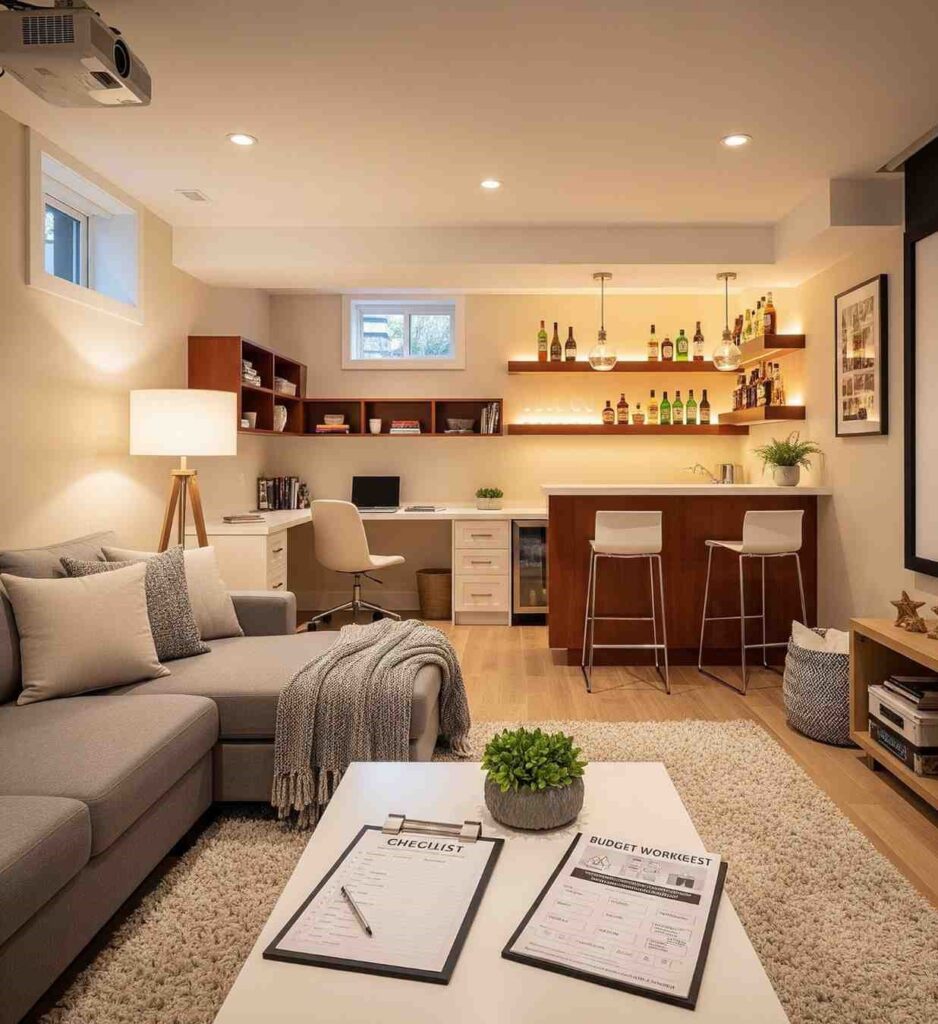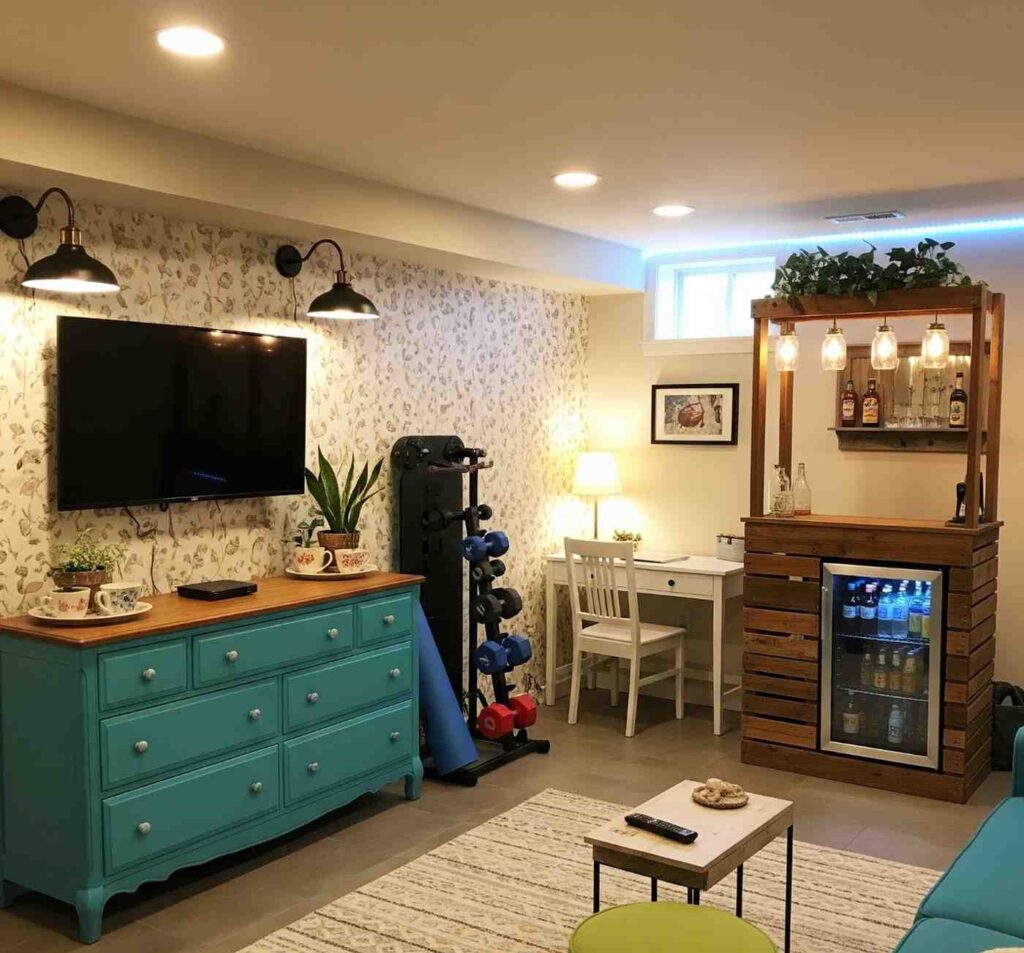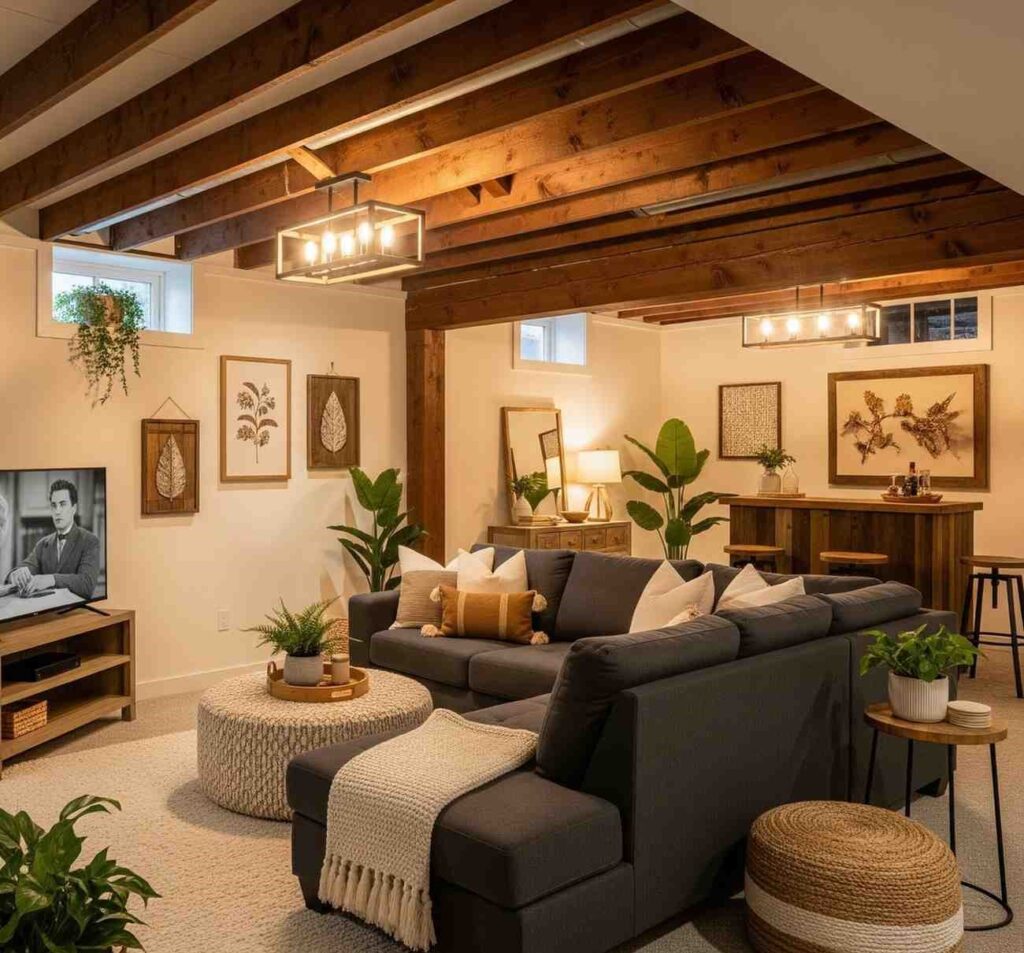Dreaming of a finished basement but don’t want to spend a fortune? You’re not alone. Whether you’re looking to create a cozy family room, a home office, or even a rental unit, finishing your basement on a budget is totally achievable. In this blog, we’ll walk you through creative, cost-effective basement renovation ideas that will elevate your space without emptying your wallet.
We’ll cover everything from budget planning and DIY tips to cost breakdowns for common renovations. Let’s get started!
Section 1: Plan Your Budget Before You Begin
Before diving into your basement transformation, it’s crucial to plan your budget. A clear financial strategy will help ensure you don’t overspend and can make smarter decisions throughout the renovation.
Tip 1: Establish a Realistic Budget and Stick to It
Start by setting a budget based on the space you want to renovate and the work you want to accomplish. Here’s a general cost breakdown:
| Renovation Task | Average Cost per SqFt |
|---|---|
| Drywall | $1.50 – $2.50 |
| Flooring (Vinyl, Laminate) | $2 – $5 |
| Lighting Fixtures | $25 – $100 each |
| Paint | $1 – $3 per sq ft |
Tip 2: Plan in Phases
Instead of tackling everything at once, break the renovation into manageable phases. For example:
- Phase 1: Install flooring (vinyl or laminate) and basic drywall.
- Phase 2: Focus on lighting, wall painting, and insulation.
- Phase 3: Add furniture, storage solutions, and final decor.
This way, you can spread costs over time and make adjustments based on your available funds.

Section 2: DIY Ideas to Save Money on Basement Renovations
DIY is one of the most effective ways to cut costs while giving your basement a fresh look. Here are some ideas that you can easily tackle yourself:
Tip 1: Install Affordable Flooring
Skip the expensive hardwood and go for budget-friendly alternatives like peel-and-stick vinyl tiles or laminate flooring. These materials are not only cheap but also easy to install.
DIY Step-by-Step for Peel-and-Stick Vinyl Tiles:
- Clean the basement floor thoroughly.
- Measure and cut tiles to fit edges or corners.
- Peel the backing off each tile and stick it to the floor, pressing firmly as you go.
- Use a utility knife to trim any excess tile for a clean finish.
Cost Estimate: Vinyl tiles can cost as little as $1.50 per sq ft, while laminate flooring runs about $2-$3 per sq ft.
Tip 2: Paint and Upgrade Walls
If your basement has exposed concrete or outdated drywall, a fresh coat of paint can go a long way. Opt for neutral tones or soft pastels to create a more inviting space. You can even create texture on the walls using drywall compound for a more rustic look.
DIY Step-by-Step for Textured Walls:
- Apply a thin layer of drywall compound to the wall.
- Use a trowel or brush to create a textured pattern.
- Let it dry and then paint it with a washable wall paint.
Cost Estimate: Painting supplies (paint, brushes, etc.) can cost about $50-$100 for a 300 sq ft room.

Tip 3: Install Your Own Lighting and Electrical Fixtures
Save on costly electrician bills by installing your own light fixtures and outlets. Consider affordable options like recessed LED lights or industrial-style pendant lights that can provide great lighting at a fraction of the cost.
Safety Tip: If you’re not comfortable working with electrical wiring, hire a pro for this part, but you can install fixtures and switch covers yourself.
Cost Estimate: Lighting fixtures range from $25 to $100 each, depending on style and type.
Section 3: Creative, Low-Cost Basement Design Ideas
Once the basics are covered, it’s time to get creative! Here are a few design ideas that will make your basement feel like a whole new space—without spending too much.
Tip 1: Repurpose and Upcycle Furniture
Instead of buying brand-new furniture, check thrift stores or your own attic for furniture pieces you can repurpose. Old bookshelves, chairs, or even dressers can be transformed with a coat of paint or new upholstery.
DIY Tip: Turn a plain dresser into a stylish media console for your basement entertainment area!
Tip 2: Multi-Functional Spaces
Make the most of your basement’s square footage by turning it into a multi-functional space:
- Home Office + Gym: Install foldable gym equipment and wall-mounted storage to save floor space. A corner desk or wall-mounted workstations can help you create a small home office without sacrificing room.
- Basement Bar: Set up a DIY wet bar using inexpensive materials like reclaimed wood or a small countertop and a mini-fridge.

Tip 3: Budget-Friendly Home Theater Setup
Transform your basement into a home theater with minimal investment. All you need is a projector, some inexpensive acoustic foam panels, and a blank wall (or DIY screen). Use thrifted chairs or cushions for seating to create that cozy cinema atmosphere.
DIY Step-by-Step for Home Theater Screen:
- Hang a white bed sheet or a blackout curtain on the wall.
- If you want to make it permanent, frame the screen with cheap wooden trim.
- Set up your projector, and enjoy!
Cost Estimate: A budget projector can cost as low as $100, and acoustic foam panels are around $20 for a set.
Section 4: Cost Breakdown of Popular Basement Renovation Ideas
Here’s a quick look at the average costs associated with some common basement renovation projects:
- Basic Finishing (Drywall, Painting, Flooring): Around $5-$10 per sq ft.
- Lighting & Electrical Upgrades: Expect to spend $150-$300 for lighting and wiring installation.
- Storage Solutions: Custom shelving or cabinetry can be made for around $200-$400.
Section 5: Hire a Contractor or DIY?
This is one of the toughest decisions in any renovation project. Here’s how to decide:
- DIY: Ideal for small, simple projects like painting, flooring, or installing light fixtures.
- Contractor: For tasks that require expertise, such as electrical work, plumbing, or major structural changes.
Budget Tip: Get multiple quotes from contractors, and always ask for a breakdown of the costs. This ensures you’re getting a fair price for the work you need done.
Section 6: Local Trends & Regional Advice
The cost of finishing a basement can vary depending on where you live. For example:
- Cold climates may require additional insulation, which can increase costs.
- Warmer regions might not need extensive insulation, but moisture-proofing could be a concern.
Consider talking to local professionals who can give you insights into trends and average costs specific to your area.
Plan, Budget, and Create Your Dream Basement
Finishing your basement doesn’t need to be a financial burden. By following these budget-friendly ideas, you can create a space that fits your style and needs without stretching your budget. Whether you’re tackling the project yourself or hiring a professional, make sure to plan ahead, prioritize your needs, and focus on smart, cost-effective choices.
Ready to transform your basement? Download our free budget worksheet and checklist to start planning your dream basement today!

Leave a Reply